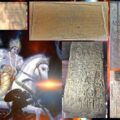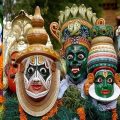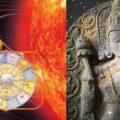The Advent of Kali Yuga: Surya Siddhanta Unveiled
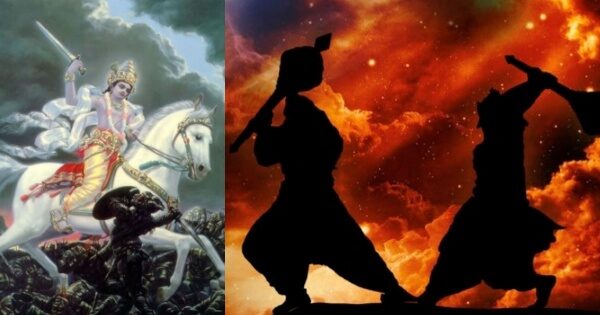
Wikipedia writes, “According to the Surya Siddhanta, Kali Yuga began at midnight (00:00) on 18 February 3102 BCE”. This write-up aims to bring out the Surya Siddhanta evidence, which according to many (including wiki), gives us information about the first day of Kali Yuga.
The Surya Siddhanta is arguably the oldest extant Indian Astronomy treatise available today. The knowledge contained in the Surya Siddhanta is said to have been received by Mayasura from the Sun God himself.
The Surya Siddhanta describes the rules to calculate the motions of various planets and the moon relative to different constellations and calculates the orbits of various astronomical bodies.
The general belief among common people is that the beginning of Kali Yuga is given by the Surya Siddhanta. Most Indic researchers also hold the same view and then attempt to date the Mahabharata War based on the Kali Yuga date supposedly given by the Surya Siddhanta.
A common feature of these conversations about the beginning of Kali Yuga being mentioned in the Surya Siddhanta is that these claims are typically made without ever quoting the specific Sanskrit references from this book!
The original verses from the Surya Siddhanta are not provided because…the word Kali is not used even once in the book!!
As a matter of fact, the Surya Siddhanta does not mention any Yuga except for the Krita Yuga.
Right at the outset, the introductory verse of the Surya Siddhanta says that Mayasura—the originator of its knowledge—started his learning when the Krita Yuga was about to end.
अचिन्त्याव्यक्तरूपाय निर्गुणाय गुणात्मने ।
समस्तजगदाधारमूर्तये ब्रह्मणे नमः ॥
अल्पावशिष्टे तु कृते मयो नाम महासुरः ।
रहस्यं परमं पुण्यं जिज्ञासुर्ज्ञानमुत्तमम् ॥
(1.1) “To him whose shape is inconceivable and unmanifested, who is unaffected by the qualities, whose nature is quality, whose form is the support of the entire creation-to Brahma be homage.”
(1.2) “When but little of the Krita Yuga was left, a great asura, named Maya, being desirous to know that mysterious, supreme, pure and exalted science (Jyotisha).”
Comment: Similar statements regarding Krita Yuga prevailing or having just passed is recorded in multiple other places in the same chapter.
The Surya Siddhanta next mentions the bygone Yugas and Kalpas before putting forward its formula for calculating Time reckoning.
कल्पादस्माच्च मनवः षड् व्यतीतावस्संसंधयः ।
वैवस्वतस्य च मनोः युगानां त्रिघनो गतः ॥
अष्टाविंशाद्युगादस्माद्यातमेकं कृतं युगम् ।
अतः कालं प्रसंख्याय सङ्ख्यामेकत्र पिण्डयेत् ॥
(1.22) “And of this Kalpa, six Manu are past, with their respective twilights; and of the Manu son of Vivasvant, twenty-seven ages are past.”
(1.23) “Of the present the twenty-eighth age, this Krita Yuga is past: from this point, reckoning up the time, one should compute together the whole number.”
Comment: So, contrary to the mainstream belief, the Surya Siddhanta offers a reckoning of time from the end of Krita Yuga and NOT from the beginning of Kali Yuga!
We again see a statement about Kritanta being reiterated by the Surya Siddhanta after putting forward its formula for calculating the number of revolutions of celestial objects in a Yuga.
युगानां त्रिघनं यातं तथा कृतयुगं त्विदम् ।
प्रोज्झ्य सृष्टेस्ततः कालं पूर्वोक्तं दिव्यसंख्यया ॥
सूर्याब्दसंख्यया ज्ञेयाः कृतस्याऽन्ते गता अमी ।
खचतुष्कयमाद्र्यग्निशरनन्दनिशाकराः ॥
(1.46) “The twenty-seven ages (Yuga) that are past, and likewise the present Krita Yuga; from their sum subtract the time of creation, already stated in terms of divine years.”
(1.47) “In solar years: the result is the time elapsed at the end of the Krita Yuga; namely, one billion, nine hundred and fifty-three million, seven hundred and twenty thousand solar years.”
By now, the recurring theme of “Krita” and “Kritanta” should have clarified about the epoch/Yuga the Surya Siddhanta is referring to—the Krita Yuga.
However, few researchers quote a popular reference from the Surya Siddhanta (obviously, only the English translation), which supposedly talks of a major conjunction of planets near the beginning of Aries at the start of Kali Yuga. Subsequently, they use this reference to arrive at the date of Mahabharata War.
Does the Surya Siddhanta really say that? NO!!
The Surya Siddhanta explicitly states that the said conjunction took place at the end of Krita Yuga and NOT at the beginning of Kali Yuga.
अस्मिन् कृतयुगस्यान्ते सर्वे मध्यगता ग्रहाः ।
विना तु पातमन्दोच्चान् मेषादौ तुल्यतामिताः ॥
मकरादौ शशाङ्कोच्चं तत्पातस्तु तुलादिगः ।
निरंशत्वं गताश्चान्येनोकतास्ते मन्द चारिणः ॥
(1.57) “Now, at the end of the Krita Yuga, all the planets, by their mean motion-excepting, however, their nodes and apsides (mandocca)-are in conjunction in the first of Aries.”
(1.58) “The moon’s apsis (ucca) is in the first of Capricorn, and its node is in the first of Libra; and the rest, which have been stated above to have a slow motion-their position cannot be expressed in whole signs.”
Is it not a terrible manipulation of the ancient scriptures on the part of the researchers to consider “कृतयुगस्यान्ते” which is “the end of Krita Yuga” as “the beginning of Kali Yuga” and misguide or confuse the common uninformed folks?
Summary
1. The Surya Siddhanta does not offer any setting to determine the beginning of Kali Yuga.
2. The Surya Siddhanta predominantly deals with the epoch of Krita Yuga and Kritanta.
3. The inability of the researchers to differentiate between their subjective conviction and the objective evidence serves more to misguide the uninformed than help them.
4. The next time anyone talks of the Surya Siddhanta evidence for the beginning of Kali Yuga…ASK for the original Sanskrit verse of the putative reference.
In this article, we saw the reality of claims regarding “Surya Siddhanta and Kali Yuga”, but what if the Kritanta planetary setting of Surya Siddhanta applicable to other Yugas as well? Also, what about the claims of “Aryabhatiya and Kali Yuga” and, most importantly, what about “Mahabharata and Kali Yuga”?
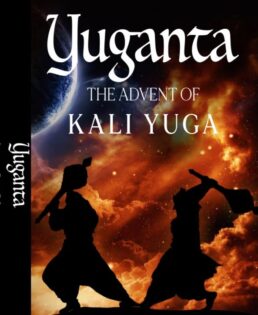
These questions and more have been answered in my latest book “Yuganta: The Advent of Kali Yuga”, which is now available on Amazon.
Disclaimer: The views expressed here are solely of the author. My India My Glory does not assume any responsibility for the validity or information or images shared in this article by the author.
Jeevan Rao
Latest posts by Jeevan Rao (see all)
- The Advent of Kali Yuga: Surya Siddhanta Unveiled - November 21, 2024



